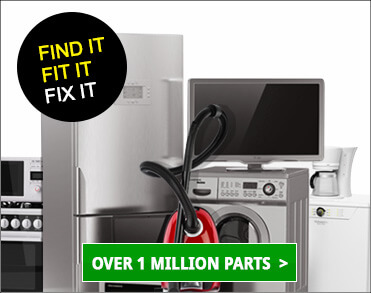
5 Types of Vacuum Cleaner Filters and How to Maintain Them
September 1, 2021 | Uncategorized | Vacuum Cleaner Repair, Help & Advice | No comments
Increase your vacuum cleaner knowledge with the lowdown on the different types of vacuum cleaner filters out there.
Knowing where to find your vacuum cleaner filters and how to keep them clean is a key part of maintaining your appliance. So it’s important to have at least a basic understanding of the filters in your machine to keep suction power high and the internal parts looked after.
Without further ado, here’s some general vacuum cleaner filter info that will help you in the long run.
Types of Filters and How to Care For Them
There are five main types of vacuum cleaner filters. Knowing which one your vacuum cleaner has can go a long way in helping you maintain it correctly.
So, let’s take a look…
1. Bag Filters

Some bagged vacuum cleaners use the bag as the primary filtration system. These bags tend to be made from paper, cloth or other synthetic materials. Bag filters work by having very small holes which allow air to escape whilst keeping dirt or dust contained. However, since some smaller particles can still escape, some bagged vacuum cleaners also have additional filters.
To keep your vacuum cleaner running properly with a bag filter, you simply need to keep an eye on the bag and change it when it gets full.
2. Foam Filters
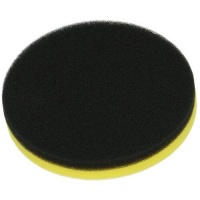
Foam filters are generally the most basic type of filter, and so they are often used as a secondary filter. They collect smaller particles of dust and are usually placed after the primary filter to catch any debris that might have been missed. However, they can sometimes serve as primary filters too, so it’s always worth checking before buying a new one.
Most foam filters can be washed instead of replaced, but you should always check with your manufacturer first to be on the safe side.
3. Cyclone Filters
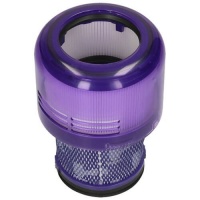
Many bagless vacuum cleaners, including Dyson models, use cyclone filters as their primary filter. In vacuum cleaners with a cyclone, the air is spun around and dirt particles are forced outwards to collect in the bottom of the dust bin. Meanwhile, the air is forced upwards and passes through a filter that catches any dust particles left in the air.
Cyclone filters should be cleaned around once every three months in cold water and left to air dry.
4. Cartridge Filters

These are one of the most common types of filter and can be used as either primary or secondary filters depending on your vacuum. They have a circular design and are usually made of foam, folded paper or other synthetic materials.
Cartridge filters can be either replaceable or washable, so again, it’s always important to check your specific vacuum model before replacing or washing. Nobody wants to throw away a perfectly good filter if it just needs a rinse or ruin a filter by washing it!
5. Cloth Filters
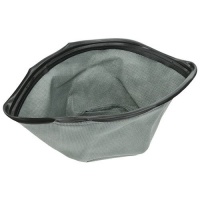
Cloth filters can generally be found in larger vacuum cleaners. These filters are built to clear larger particles and heavier debris from industrial settings such as workshops and construction sites.
Due to their sturdy nature, they are both washable and more long-lasting than other filters. However, as these filters are made for heavy-duty tasks, they don’t handle smaller debris and dust so well. Because of this, they are often used along with a secondary filter too.
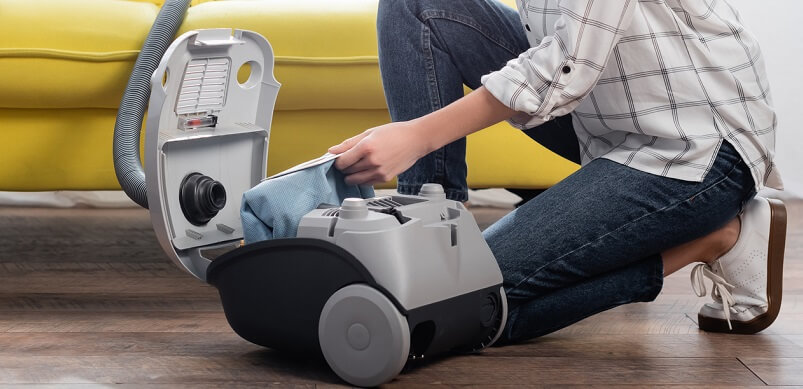
Why Caring For Your Filters is Important
As vacuum cleaner filters are kept inside vacuums and are not often visible during use, it can be easy to forget about them.
Unfortunately, here are a few issues a dirty or damaged filter can cause.
- If your filter gathers too much dirt over time, the airflow will be reduced and debris can build up inside your machine and cause blockages. The extra exertion this puts on internal parts like the motor can cause damage leading to a costly vacuum cleaner repair or part replacement.
- A vacuum cleaner with a dirty filter has to work harder to suck air through the machine. This leads to more power being used, and therefore an increase in your electricity bill too.
- If your vacuum cleaner filter isn’t changed or cleaned when it should be, it can end up leaking debris back out into the room you’re cleaning. So a less-effective filter is not good for your health or your cleaning results.
Always clean your filters regularly and if you notice any damage replace them straight away.
Can your filter be washed?
It’s also important to know which filters are washable and which ones aren’t. If you wash a filter that shouldn’t be washed, you could damage it. If you don’t wash a filter that can be washed, you could end up not cleaning it properly which could impact your vacuum cleaner’s performance.
Sometimes the filter itself will have markings that indicate whether or not it’s washable. If not, check the user manual that came with your vacuum cleaner for filter care instructions.

What should you avoid when washing your filter?
If your filter is washable, the three golden rules are:
1. Don’t use any cleaning chemicals, fabric softeners or detergent on your filter. Use just plain cold water unless the manufacturer explicitly states otherwise.
2. Don’t use any heating appliances like tumble dryers, ovens or hair dryers to dry the filter. Let the filter air dry unless the user manual tells you differently.
3. Ensure the filter is completely dry before replacing it into the appliance.
The last thing you want when cleaning your filter is to end up with a damaged one instead!
What are pre-motor, post-motor and HEPA filters?
Many vacuums have not one but two filters.
The pre-motor or air inlet filter can be found before airflow travels past the motor. This filter is designed to catch dirt and dust to protect the vacuum cleaner’s internal parts.
The post-motor, air outlet or exhaust filter can be found at the point where air exits the machine. Thie filter is helpful for allergy protection and achieving great cleaning results as it catches fine dust particles and allergens so they don’t get spread around the room as air exits the vacuum cleaner.
If you have two different filters in your appliance, get to know where they can be found as well as which is which.
If your filter is a HEPA filter this is great news as this means it has met high-efficiency standards for removing dust and allergens. When buying a replacement filter it’s always worth seeing if there is HEPA options available.
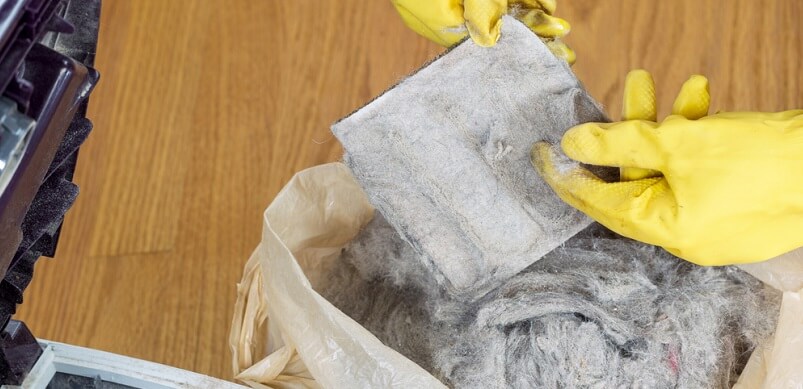
How often should you clean your filters?
Overall, a dirty or damaged filter can spell disaster, which is why it’s vital to remember to wash or change them when required.
Many manufacturers recommend cleaning washable filters once a month and replacing your filter once every three to six months.
However, these instructions don’t always apply to every type of filter. Simply look up exactly what your manufacturer recommends. In doing so, you can find out exactly how to correctly care for your filter as well as handy maintenance tips.
What happens if you run your vacuum cleaner without a filter?
If the filter is drying, damaged or missing, do not use the vacuum cleaner at all until a dry, working filter has been refitted into the machine. Running the appliance without a filter exposes the internal parts of the machine to all the dirt and debris you’re sucking up.
If you do that, you won’t be running the appliance for much longer!
Thank you for reading our blog post on the different types of vacuum cleaner filters! Hopefully, you’re now a little more familiar with their different properties and how to care for them.
While you’re here, don’t forget to also check out our blog post on getting to know the different vacuum cleaner nozzles out there, so you can make common vacuuming tasks around your home faster and easier.
Tags: Vacuum Cleaner, Vacuum Cleaner Advice, Vacuum Cleaner Filters, Vacuum Filter

